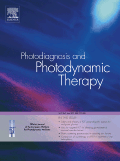
Photodiagnosis and Photodynamic Therapy
Scope & Guideline
Bridging Science and Light for Enhanced Medical Solutions
Introduction
Aims and Scopes
- Photodynamic therapy applications in oncology:
The journal highlights research on the use of PDT in treating various cancers, emphasizing its efficacy, safety, and mechanisms of action. - Innovative diagnostic techniques:
It explores advancements in photodiagnostic methods, particularly those using fluorescence and optical coherence tomography to enhance early detection of diseases. - Antimicrobial photodynamic therapy:
The journal covers studies on the application of PDT in combating microbial infections, focusing on its effectiveness against resistant strains. - Mechanistic studies:
Research detailing the biological mechanisms underlying PDT, including cellular responses, apoptosis pathways, and the role of different photosensitizers. - Combination therapies:
Investigations into the synergistic effects of combining PDT with other therapeutic modalities, such as chemotherapy, immunotherapy, and laser treatments. - Clinical outcomes and patient management:
The journal emphasizes clinical studies assessing patient outcomes, side effects, and overall management strategies involving PDT.
Trending and Emerging
- Use of artificial intelligence and machine learning:
There is a growing trend towards integrating AI and machine learning techniques in photodynamic therapy research, particularly for predictive modeling and imaging analysis. - Personalized medicine approaches:
Recent articles focus on tailoring PDT protocols to individual patient needs, enhancing treatment efficacy and minimizing side effects. - Nanotechnology in photodynamic therapy:
Emerging research emphasizes the use of nanomaterials to improve the delivery and effectiveness of photosensitizers, showcasing advancements in targeted therapy. - Theranostics:
The combination of therapeutic and diagnostic capabilities in a single agent is gaining traction, highlighting the potential for integrated treatment and monitoring. - Real-world clinical outcomes:
An increasing emphasis on clinical studies assessing long-term outcomes and quality of life post-treatment reflects a shift towards patient-centered research. - Environmental and sustainability considerations:
New studies are considering the environmental impact of photodynamic therapy materials and methods, aligning with broader trends towards sustainability in medicine.
Declining or Waning
- Traditional photodynamic therapy techniques:
There is a noticeable decrease in studies focused solely on conventional PDT approaches, as newer techniques and combinations are gaining more attention. - Basic research on photosensitizers:
Research centered on the fundamental properties of existing photosensitizers appears to be waning, with a shift towards innovative and multifunctional materials. - Non-cancerous applications of PDT:
While PDT was initially explored for various non-cancerous conditions, recent trends show fewer studies in this area, focusing more on oncology. - Standalone diagnostic methods:
The journal has seen a reduction in articles discussing traditional diagnostic methods without integration into photodynamic applications, as interdisciplinary approaches become more favored.
Similar Journals
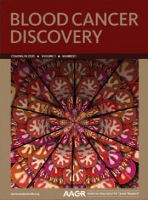
Blood Cancer Discovery
Catalyzing Change in Cancer Research LandscapesBlood Cancer Discovery is a premier academic journal published by the American Association for Cancer Research, dedicated to advancing the understanding of hematologic malignancies through cutting-edge research in the fields of oncology, biochemistry, and molecular biology. With an impressive impact factor and recognition as a Q1 journal across multiple disciplines, including cancer research and hematology, Blood Cancer Discovery serves as an essential platform for scholars and practitioners alike, facilitating impactful discourse and dissemination of pioneering findings. This open-access journal, established within the vibrant academic landscape of the United States, aims to bridge gaps in research and foster collaborations to ultimately enhance patient outcomes. Its Scopus rankings demonstrate its vital role in the critical advancement of cancer research and therapeutic development. By inviting contributions from a diverse range of disciplines, Blood Cancer Discovery is poised to drive innovation and inspire future advancements in understanding blood cancers.

Journal of Biophotonics
Bridging Theory and Application in BiophotonicsJournal of Biophotonics is a prestigious academic journal published by WILEY-V C H VERLAG GMBH in Germany, dedicated to advancing the field of biophotonics through high-quality research. With an ISSN of 1864-063X and an E-ISSN of 1864-0648, this journal is recognized for its contributions within diverse categories, including biochemistry, genetics, molecular biology, chemistry, engineering, materials science, and physics, earning a commendable Q2 ranking in several of these fields as of 2023. The journal aims to bridge the gap between theoretical research and practical applications, fostering interdisciplinary collaboration that is critical for innovations in imaging, diagnostics, and therapeutics. Researchers, professionals, and students alike will find the Journal of Biophotonics invaluable for staying informed about the latest developments and breakthroughs in this dynamic field, making it a cornerstone for knowledge dissemination and scholarly discourse from its inception in 2008 and continuing through 2024.
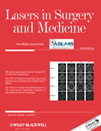
LASERS IN SURGERY AND MEDICINE
Transforming medical practices with groundbreaking laser insights.LASERS IN SURGERY AND MEDICINE, published by Wiley, is a premier peer-reviewed journal dedicated to advancing the field of laser technology in surgical and medical applications. With an impactful contribution to research since its inception in 1980, this journal has maintained a strong presence in high-impact categories, achieving Q1 status in both Dermatology and Surgery as of 2023. The journal is highly regarded, ranking #69 out of 551 in Medicine—Surgery and #21 out of 142 in Medicine—Dermatology within Scopus, indicating its significant influence in shaping contemporary surgical practices. Although it does not currently offer open access, subscribers and institutions can access a wealth of knowledge through its rigorous publication standards and high-quality research articles. Perfect for researchers, professionals, and students, LASERS IN SURGERY AND MEDICINE is an essential resource for those looking to stay at the forefront of innovations in laser applications across various medical fields.

Expert Review of Anticancer Therapy
Navigating the complexities of oncology with expert guidance.Expert Review of Anticancer Therapy, published by Taylor & Francis Ltd, is a distinguished journal focusing on the dynamic and ever-evolving field of oncology and pharmacology. Since its inception in 2001, this journal has played a pivotal role in disseminating critical reviews and analyses of novel anticancer therapies, fostering a deeper understanding among researchers and practitioners alike. With an impressive categorization in the 2023 Q2 quartiles for both Oncology and Pharmacology, it ranks #98 out of 272 in Pharmacology and #165 out of 404 in Oncology according to Scopus metrics, placing it well within the upper echelons of academic journals. The journal’s rigorous peer-review process ensures high-quality publications that are integral for advancing cancer research and therapeutic strategies. Although currently not an open access journal, it aims to bridge the gap between scientific discovery and clinical application, making it an essential resource for anyone involved in the fight against cancer.
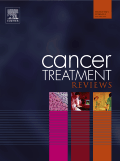
CANCER TREATMENT REVIEWS
Elevating cancer treatment knowledge for all.Cancer Treatment Reviews, published by Elsevier Science Ltd, is a leading international journal dedicated to the exploration and advancement of therapeutic strategies in oncology. With an impressive impact factor that reflects its status in the field, this journal is classified within Q1 quartile rankings in Medicine (Miscellaneous), Oncology, and Radiology, Nuclear Medicine and Imaging, as of 2023. The journal has a rich lineage, having been established in 1974 and consistently evolving to encompass the latest breakthroughs and methodologies in cancer treatment. A vital resource for researchers, clinicians, and students alike, it aims to promote understanding and application of effective interventions, thereby contributing to improvements in patient outcomes. By prioritizing high-quality reviews, Cancer Treatment Reviews plays an essential role in bridging the gap between current research and clinical practice, making it an indispensable asset in the continuous fight against cancer.
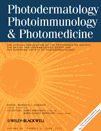
PHOTODERMATOLOGY PHOTOIMMUNOLOGY & PHOTOMEDICINE
Advancing Knowledge in Photomedicine and ImmunologyPHOTODERMATOLOGY PHOTOIMMUNOLOGY & PHOTOMEDICINE, published by WILEY, is a leading academic journal dedicated to the interdisciplinary study of skin-related health issues, particularly focusing on the impacts of ultraviolet light as well as the immunological and therapeutic aspects of photomedicine. With a rich publication history dating back to 1990 and a commitment to advancing knowledge in its field, this journal serves as a vital resource for researchers and professionals working in dermatology, immunology, and related disciplines. Recognized for its high impact, it has achieved a Q1 classification in Dermatology and holds robust rankings in several other categories, reflecting its strong contribution to scholarly discourse. Although it does not currently operate as an Open Access publication, PHOTODERMATOLOGY PHOTOIMMUNOLOGY & PHOTOMEDICINE remains crucial for disseminating essential findings and innovations, particularly for those involved in studies exploring the intersections of skin health, immune response, and therapeutic technologies.
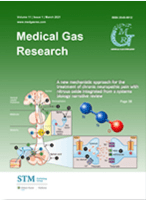
Medical Gas Research
Redefining Pain Management with Cutting-Edge ResearchMedical Gas Research is a prominent academic journal dedicated to the field of anesthesiology and pain medicine, published by Wolters Kluwer Medknow Publications. With an ISSN of 2045-9912, this journal operates under a robust open access model, facilitating the wide dissemination of research findings across a global audience. Based in India, Medical Gas Research aims to present innovative studies and reviews that explore the therapeutic applications of medical gases, their mechanisms of action, and their impact on various neurological conditions. The journal has an admirable positioning within academic rankings, holding a Q2 classification in Anesthesiology and Pain Medicine and a Q3 designation in Neuroscience (miscellaneous) for 2023, reflecting its significant influence in these domains. Moreover, it ranks #35 out of 136 in the field of Anesthesiology, highlighting its contribution to advancing this vital area of medicine. Overall, the journal serves as an essential resource for researchers, professionals, and students aiming to stay abreast of the latest advancements and interdisciplinary approaches within the medical gas research landscape.

EXPERT OPINION ON BIOLOGICAL THERAPY
Championing Excellence in Biochemical Research and TherapyEXPERT OPINION ON BIOLOGICAL THERAPY, published by Taylor & Francis Ltd, is a prestigious journal that has been a cornerstone in the fields of Clinical Biochemistry, Drug Discovery, and Pharmacology since its inception in 2001. With an impressive impact factor reflecting Q1 status across its categories in 2023, this journal is ranked among the top in both the pharmacology and biochemistry domains, featuring in the 81st and 77th percentiles respectively. This makes it an essential resource for researchers, professionals, and students who are keen on staying at the forefront of biological therapy advancements. The journal encompasses a broad yet focused scope, providing valuable insights into innovative therapeutic strategies and drug development methodologies. Researchers benefit from the rigorous peer-review process and the opportunity to disseminate their findings to a global audience, without the constraints of open access, ensuring the integrity and prestige of published work. As it converges towards 2024, EXPERT OPINION ON BIOLOGICAL THERAPY remains an influential platform for fostering collaboration and discussion in the evolutionary landscape of biological therapies.
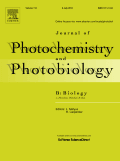
JOURNAL OF PHOTOCHEMISTRY AND PHOTOBIOLOGY B-BIOLOGY
Transforming Science with the Power of PhotochemistryJOURNAL OF PHOTOCHEMISTRY AND PHOTOBIOLOGY B-BIOLOGY is a prestigious academic journal published by Elsevier Science SA in the Netherlands, focusing on the interdisciplinary domains of photochemistry and photobiology. With a notable impact factor and distinguished recognition across multiple disciplines, including Q1 rankings in Biophysics, Radiation, and Radiological and Ultrasound Technology, this journal is at the forefront of research dissemination in its field. The publication spans over three decades, from 1987 to 2024, reflecting its long-standing commitment to advancing knowledge in areas critical to both fundamental and applied science. Researchers and professionals are encouraged to submit original research articles, reviews, and short communications that explore the interactions between light and biological systems, with the aim of fostering innovative solutions impacting health and technology. Although it operates on a subscription model, this journal remains a vital resource for all those engaged in the scientific exploration of these dynamic fields.
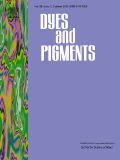
DYES AND PIGMENTS
Exploring the Spectrum of Innovation in Chemical Engineering.Dyes and Pigments, published by Elsevier Science Ltd, stands as a pivotal journal in the field of chemical engineering, particularly focusing on the realms of dyes and pigments as materials with extensive application across industries. Since its inception in 1980, this journal has evolved to capture cutting-edge research until 2024, making significant contributions to both the Chemical Engineering and Process Chemistry and Technology domains, where it currently ranks in the Q2 category. With an impressive Scopus ranking placing it among the top 82nd percentile in General Chemical Engineering and the top 73rd percentile in Process Chemistry and Technology, it demonstrates a robust commitment to publishing high-quality, impactful research. Although it does not offer an open-access option, its comprehensive content remains accessible to a wide audience of researchers, professionals, and students who are deeply engaged in the study and development of new dye and pigment technologies. Engaging with this journal not only enriches knowledge but also facilitates critical discussions that drive future innovations in chemical material sciences.